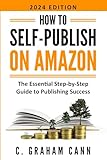Writing Poetry, Part 3
A very important element of verse is its sound. This article examines the uses of word sounds in poetry.

Wind of the western sea—
and this:
My tough lance thrusteth sure.
Let us see what the sounds are that make the first lines so melodious, and the second so clashing. Notice in the first the consonants; w, one of the most easily spoken sounds, occurs six times; s, four; 1, the liquid, twice; t, a harder sound, but not really harsh, three times; d, a hard sound here somewhat softened by the n preceding it, three times; u four times; and v once: The majority are soft sounds. The vowel sounds are mainly long o and e. In brief, there is not a harsh sound in the two lines; neither are there strong or striking ones; all is as soft and smooth, as a lullaby should be.
Now notice the consonants of the next quotation. Hard c, u, d, g; thr, t, r; such sounds predominate, with m and 1 to mitigate their harshness somewhat. The vowels are mainly short and rather sharp ; short e, a, and u are found in the most important words. Such sounds befit the sense of the lines, imitating the hard clash of steel on steel, as in the lullaby the soft whisper of wind and lapping of water is imitated. This imitation of sounds can be carried to extremes and become mechanical, but some subtle indication of the sounds, as in these examples, is thoroughly artistic.
The writing of sound to emotion is a fine art, and an essential of good poetry. Notice the sounds and the feeling of these lines
Death or I know not what mysterious doom.
Take note here of the hard t, r, k, d and long i sounds in the first words, expressing strife; and the slow m, repeated four times, the d, long e, long o, double o, 1, f, n and wh of the sadder part.
Now observe the light, tripping effect of this:
Like little mice stole in and out
As if they feared the light.
One might think this due to the rhythm, but that is the same as in
It is due instead to the many repetitions of b, combined with short e and i, in a staccato effect, with 1, m, f, s and long e and o to soften them. All the words are ones that may be spoken quickly, unlike "mysterious doom," which one naturally speaks slowly.
Poetry runs the whole gamut of emotions, just as music includes "Lohengrin " and "Florodora," and the sounds of the English language adapt themselves to every variety of fun, pathos, wrath, grief and joy. It is a mistake, however, to think mere sound can take the place of genuine feeling. Mechanical cleverness in handling sounds gives a mechanical effect.
The repetition of one sound in a line, each time at the beginning of a word, called alliteration, is frequently employed, and sometimes too frequently. There is extant a set of verses in which every word in each line begins with one letter. It begins:
Boldly by battle besieged Belgrade,
and continues through the alphabet: an example of alliteration for alliteration's sake. The proper use of alliteration, however, is found in nearly all good poetry, and adds much to its beauty. The following lines are a good example of alliteration well used, but not insistent:
And the Wrath of Eve is red on the turf as she left it long ago.
And if we could come when the sentry slept and softly survey through
By the favor of God we might know as much—as our father Adam knew.
An important phase of the sound of verse is rhyme. Most verse rhymes, and the rhyming sound is the one that most catches the ear. When a line ends with an accented syllable, as usual in iambic and anapestic rhythm, that syllable alone usually rhymes with a similar one ending another line, thus :
Long fields of barley and rye.
Lie and rye are perfect rhymes, because their sound, except the beginning letter, is identical, although the spelling is different. Rhyme is not a matter of spelling, or "shoes," "goes" and "does" would rhyme. Rhyming words need not, as in this case, be monosyllables; "go" and "below," "set" and "mignonette" are perfect rhymes, since the final accented syllables rhyme. This rhyme of final accented syllables is called the strong, or stergle, rhyme, and sometimes the masculine rhyme.
Trochaic rhythm, on the other hand, ends with a weak syllable following a strong one, and both must rhyme, as in this :
Little breezes dusk and shiv'-er.
This is called the weak, double, or feminine rhyme, and is sometimes used as a variation with iambic and anapestic rhythm.
Dactylic lines, as we have noted, seldom end with a dactyl, but when they do, the whole foot should rhyme, as in this:
Lift her with care,
Fashioned so slenderly.
This is called triple rhyme.
Besides the regular rhymes at the end of lines, we sometimes find a word within the line, usually in the middle, rhyming with one at the end, thus :
The occasional use of this internal rhyme gives a fine swing to the line and quickens its motion.
Rhyming words should be, as far as possible, words of melodious, strong or catching sound according to the effect desired, and of significant meaning. Beautiful words should be sought and trite, commonplace ones avoided.
Read These Next
Get Ready to WOW Judges: Tips for Writing Contest Submissions
How can you ensure your short story is good enough to enter into a writing contest? Here are some tips for crafting a story that stands out among the competition.
Trends in the Gift Market
While not all books are suitable for the gift market, many publishers are looking to this area for book sales that avoid the problem of returns found in regular trade channels
Potential Benefits of AI to the Book Publishing Industry
In a world where technology continues to revolutionize various industries, artificial intelligence is leaving its mark on the book publishing and bookselling sectors. This article considers the beneficial aspects of AI on the book industry.







 Self-Publishing For Dummies (For Dummies: Learning Made Easy)
Self-Publishing For Dummies (For Dummies: Learning Made Easy) Self Publishing To Amazon KDP In 2023 - A Beginners Guide To Selling E-books, Audiobooks & Paperbacks On Amazon, Audible & Beyond
Self Publishing To Amazon KDP In 2023 - A Beginners Guide To Selling E-books, Audiobooks & Paperbacks On Amazon, Audible & Beyond How to Successfully Self-Publish a Book on Amazon & Audible: How to Build a Profitable Self-Publishing Business
How to Successfully Self-Publish a Book on Amazon & Audible: How to Build a Profitable Self-Publishing Business Self-Publishing: The Secret Guide To Becoming A Best Seller (Self Publishing Disruption Book 2)
Self-Publishing: The Secret Guide To Becoming A Best Seller (Self Publishing Disruption Book 2) How to Self-Publish Your Book: A Complete Guide to Writing, Editing, Marketing & Selling Your Own Book
How to Self-Publish Your Book: A Complete Guide to Writing, Editing, Marketing & Selling Your Own Book Write. Publish. Repeat. (The No-Luck-Required Guide to Self-Publishing Success)
Write. Publish. Repeat. (The No-Luck-Required Guide to Self-Publishing Success) How to Self-Publish on Amazon: The Essential Step-by-Step Guide to Publishing Success
How to Self-Publish on Amazon: The Essential Step-by-Step Guide to Publishing Success Self Publishing To Amazon KDP In 2024 - A Beginners Guide To Selling E-books, Audiobooks & Paperbacks On Amazon, Audible & Beyond
Self Publishing To Amazon KDP In 2024 - A Beginners Guide To Selling E-books, Audiobooks & Paperbacks On Amazon, Audible & Beyond Successful Self-Publishing: How to self-publish and market your book in ebook and print (Creative Business Books for Writers and Authors)
Successful Self-Publishing: How to self-publish and market your book in ebook and print (Creative Business Books for Writers and Authors) 14 Steps to Self-Publishing a Book
14 Steps to Self-Publishing a Book